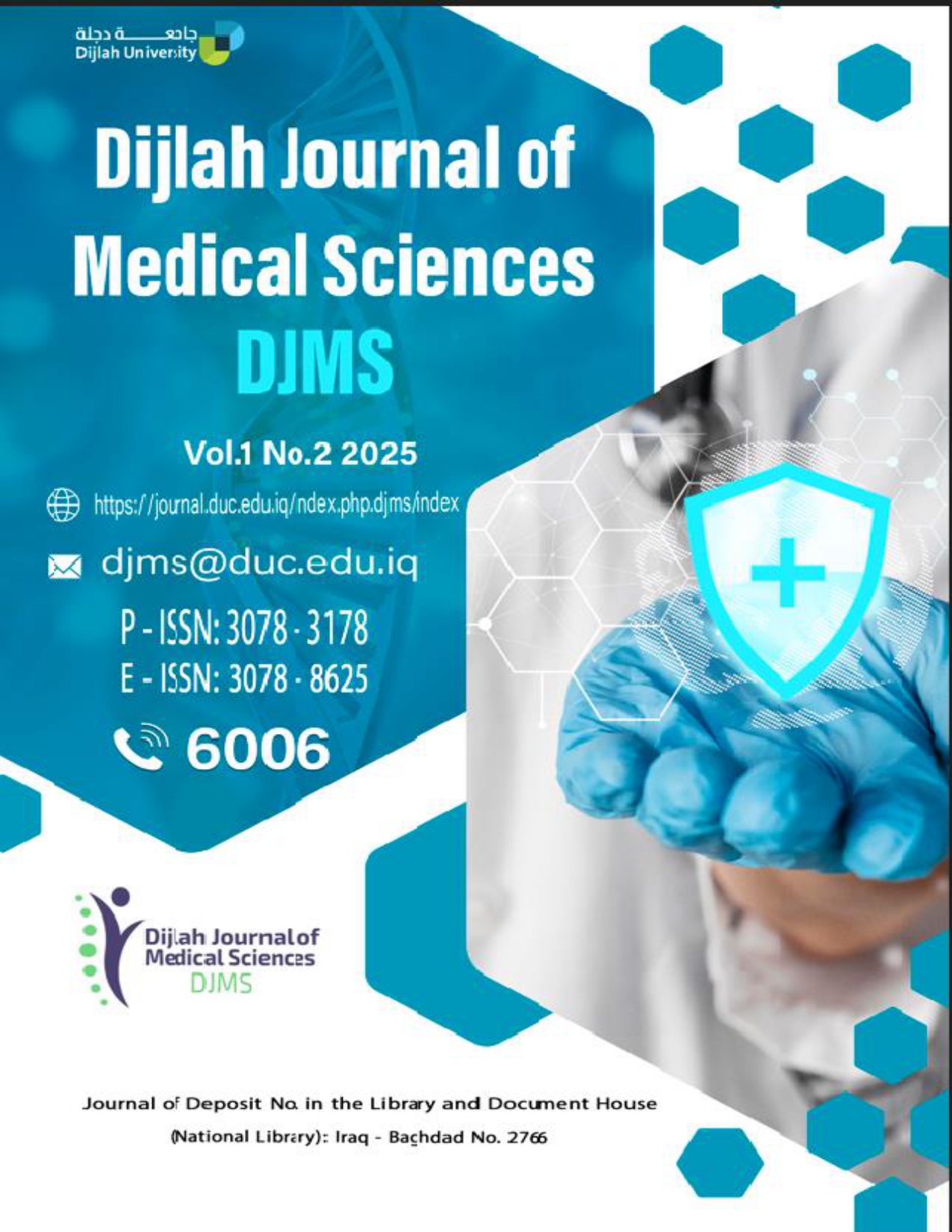Abstract
The cervix plays a significant role in confirming the appropriate pregnancy and parturition timing. One hundred blood specimens were taken from 100 women having cervicitis and from 100 apparently healthy women as controls. This work was performed at Al-Khark hospital for delivery and children, in Baghdad city during the period from January 2023 to January 2024.The resultsshowedthatthe highest infection rate (64.9%) was in the age group (15-24) years, followed by (58.1%) in the age group (35-44) years, (49.3%) in the age group (25-34) years, (47.4%) in the age group (45-54) years, and (25%) in the age group (55-60) years (p=0.03). The results also reveald no significant difference in mean Ca19.9 value among the patients (19.62 ±18.73) compared to the healthy group (19.21 ±18.68), However, a highly significant difference was found in mean Ca125 values between the patients (25.25±0.96) compared to the controls (18.98±17.95) (P<0.001). Also, there was no significant variation between mean Ca 15.3 marker in patient group (22.88±17. 78) compared tothe control group (18.86±16.44) (P= 0.72), while there was a highly significant difference between mean CRP level (89.06±0.99) in the patient group compared to the healthy (6.89±0.34) (P<0.001). The plymorfism in PTGS2 gene showed an increse in levels of Ca125 marker 4(20%) with a highly variation (P=0.001), and of CRP levels was 16(80%), with a significant variation (P=0.001), while the levels of polymorphism were found with Ca15.3 marker 3(15%), with significant variation (P=0.07) and Ca19.9 marker 1(5%), with a non-significant difference (P=0.3).No mutation was observed when the rs888160762 SNP of PTGS2 gene was analysed, while a polymorphism happened when the rs20417SNP of PTGS2 gene was analysed by the use of Sanger sequencings. The C homozygous allele was indicated by the single “C” peak, while the G/C heterozygous allele was indicated by the existence of “G” and “C” peaks
Keywords
cervicitis
geneSequencing
Polymorphism
PTGS2
women
